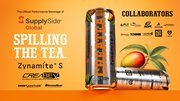Blog
We Did It Before And We Can Do It Again
June 23, 2015 by Tim Sanford
TAGS: Vending Times editorial, vending industry, vending editorial, retail automation, vending operator, vending industry history, coin machine, micro markets, coffee service, food service, Tim Sanford |
Much has been written about the opportunities to interact more closely with patrons offered by new technology. That surely is worth doing, and we think it is best done in conjunction with the proven customer-relations techniques developed by the vending industry on its five-decade journey from a novelty to the retailing mainstream.
The industry's early customer relations initiatives were responses to the recognition that, while consumers were confident in the reliability (or predictability) of a penny gumball machine, many would require reassurance before inserting a dime in a larger unfamiliar machine. The problem was identified as the inability of the much-touted "silent salesman" to do a very good job of selling.
The solution was to associate a human face or faces with the vending machines, and it has been done in many ways. One of the most versatile and visible is the "customer appreciation day," often conducted by assigning a route supervisor to visit locations on a regular schedule during break periods, stand next to the hot beverage machine, thank approaching customers for their business and offer to buy them a cup of coffee.
This worked well, and lent itself to expansion into a more overtly promotional effort when new equipment types, like the "bean-grinding" hot drink vender, entered the market. The operator's object here was not to convince patrons that a vending machine could prepare coffee, but rather to show them that the new whole-bean models could make even fresher coffee plus a wider range of coffee-based drinks, adjustable to customer preferences. That demonstration usually accompanied the machine's setup on location, and the people who conducted it generally wore cafetero hats and handed out small burlap bags filled with roasted coffee beans. This proved extremely successful in validating the higher price that gourmet coffee drinks required while generating brisk traffic.
Those who remember that success will recall that it was aided materially by the advent of General Foods International Coffees in vending. And they may recall the concern many operators had about the acceptability of a "gourmet" hot beverage at a premium price in blue-collar workplaces -- and the swift reassurance provided by higher sales.
One key to that breakthrough was the availability of regular coffee at a typical "vending" price; the consensus was that people would accept the added cost of a premium product if they did not feel that they were being compelled to spend more.
A similar method has been used to conduct occasional product sampling sessions with supplier participation. It can be done simply to remind the clientele of all the items available to them, or specifically to introduce a new product.
This is where the new technology comes in. Once the "high-touch" sampling-session has been conducted, today's machines can give suppliers very detailed information about consumer response to the items sampled, and about the impact of accompanying promotional programs.
There certainly is no shortage of new products to sample. The seismic shifts in consumer preference that have become evident over the past three or four years have inspired the introduction of items across all existing product categories, and some that constitute new ones. They tend to make their first market appearance in specialty food stores, and they generally do not coincide with traditional mass-market product types.
In thinking about the role of these things in vending, it may be helpful to remember the period in the early full-line days when several small regional bakers and confectioners recognized an opportunity in candy machines serving high-volume locations. They developed vendible cookie, cracker and novel baked goods packages, sized to fit onto shelves designed for candy bars. These proved extremely popular, not only because they offered operators better margins but also because they addressed a great shift in American snacking habits.
And those innovative suppliers took advantage of vending's ubiquity in workplaces and other away-from-home locations to get their brands in front of a nationwide cross-section of the adult buying public. The recognition and demand this created enabled them to extend those products into mass-market retail channels.
We think that the conditions today are favorable for this to happen again. More and more consumers are looking for on-the-go snacks that meet new criteria, which may include exotic ingredients and flavors derived from a wide range of cuisines. That they appear also to be concerned about "additives" and perceptions of naturalness and processing suggests that part of the appeal of those exotic ingredients may be a sense that they are of higher quality because they're uncommon. Today's payment systems seem finally to have mastered the old $1 price ceiling.
The products are there. If they can be made available in vending, they will widen menu variety and generate interest. The big challenge may prove to be identifying good low-priced products to offer the choice that vending customers demand.







